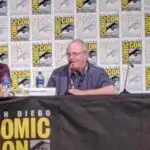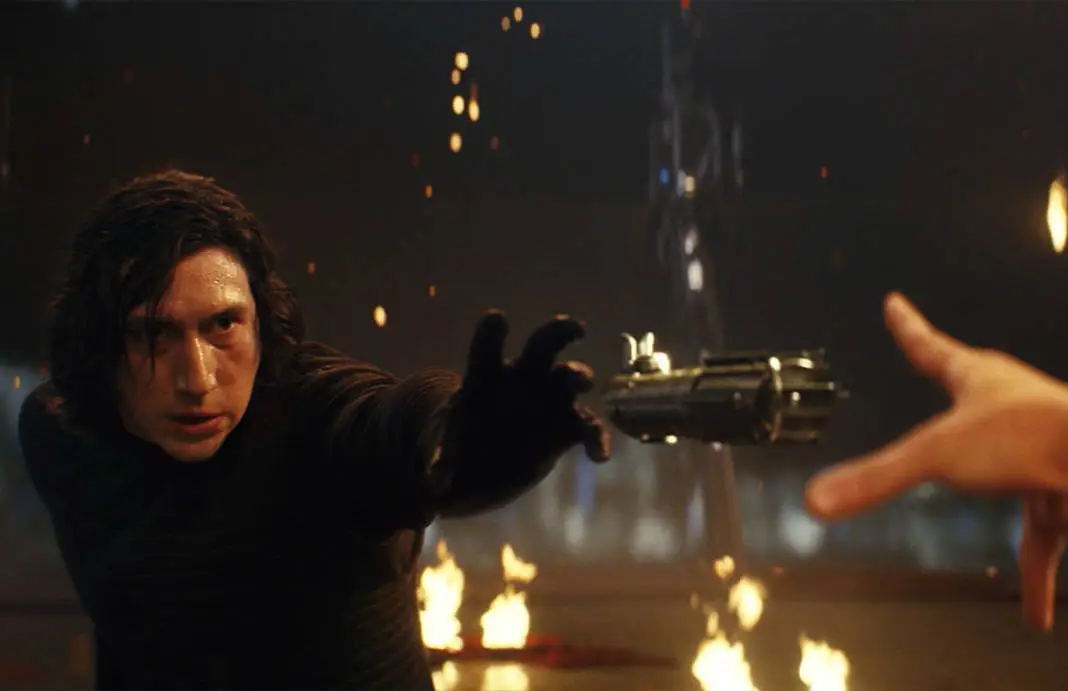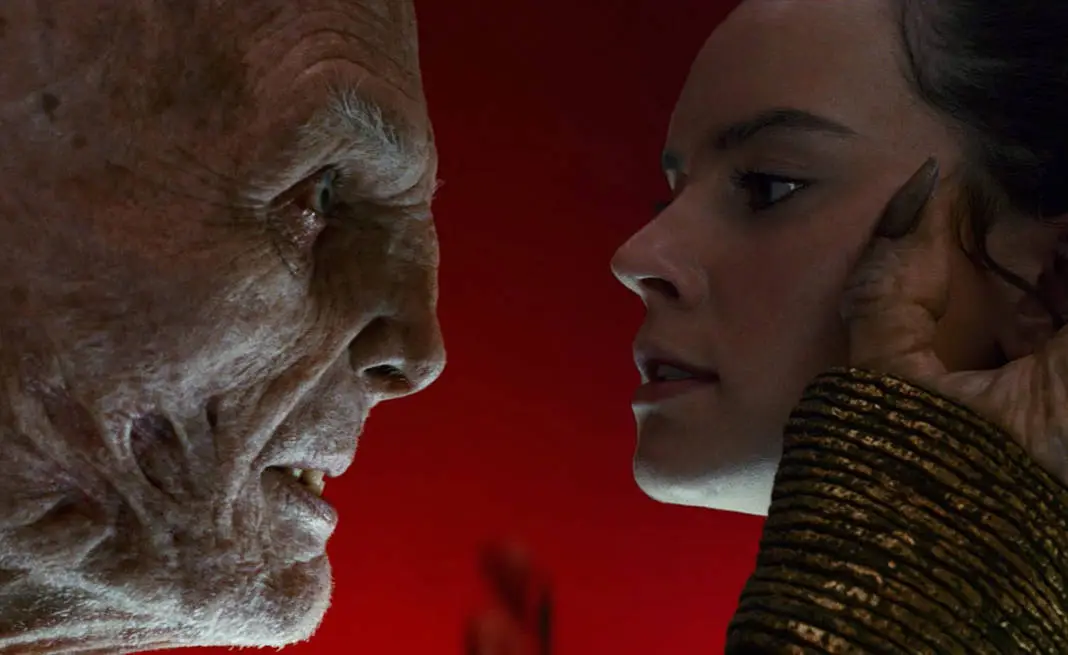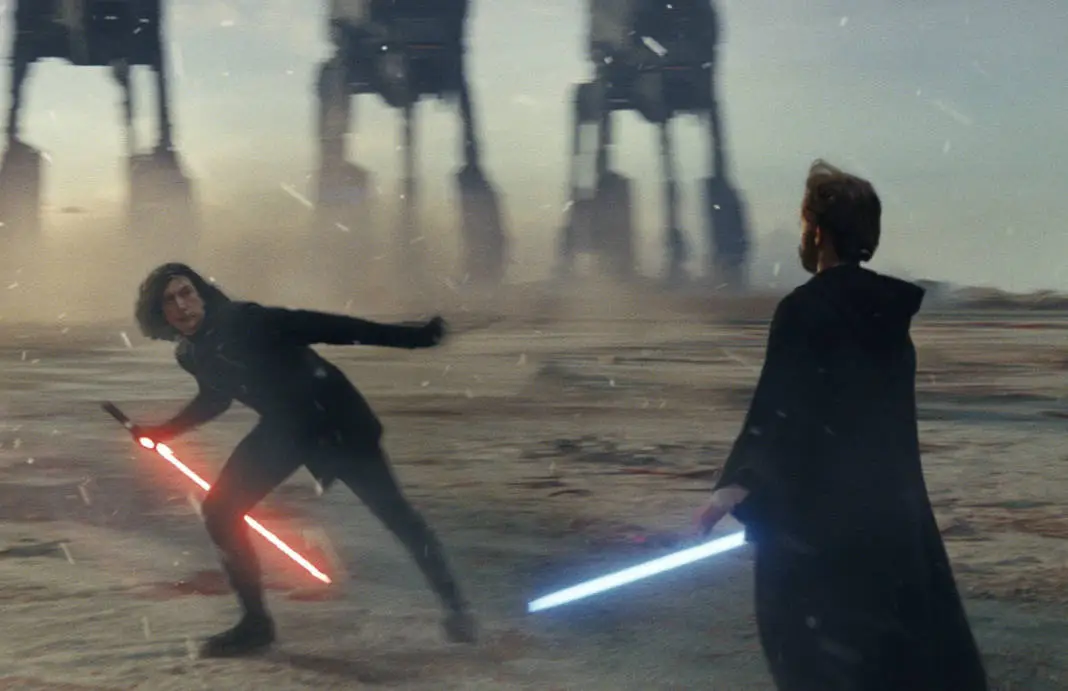In the run-up to the release of Star Wars: The Rise of Skywalker and the end of the Skywalker Saga, we will be taking a look back at all of the Saga films and re-evaluating them and their legacy as a whole.
Star Wars: Episode VIII The Last Jedi
Either a reaction to the creative choices of The Force Awakens (difficult given the production schedule) or an incredibly timely bit of synchronicity, The Last Jedi takes a full look at what Star Wars without its originator could be but is hamstrung by an inability to make up its mind and creative decisions inherited from the previous film.
The sequel trilogy was and is weighed down by the desire to both guess what its creator would have done and what its fan base would have wanted. Trying to thread the needle between the two created a backward-looking experience in The Force Awakens, which kept that film from being able to take full advantage of what new things it did invent.
The other side effect of lacking a single guiding hand behind the story is that each new filmmaker has free reign to make their episode what they want it to be, something entirely novel in the series. Working on his iteration simultaneous with J.J. Abrams production, The Last Jedi writer/director Rian Johnson essentially tackles the same questions at the same time and comes to very different conclusions.

“Let the past die,” says Kylo Ren, the focal point of Johnson’s thoughts on sequels and franchises. A character who existed in The Force Awakens largely to both impart a Darth Vader vibe to the new films and give Han Solo a dramatic arc, in The Last Jedi, he comes into his own as a fascinatingly compelling character.
Through him, Johnson smashes some of the repetitive fan services of The Force Awakens (usually literally) and makes clear that he understands what Lucas understood – the only way a long-form story can survive is if each edition is intentionally different from the others. Frequently that means taking big whacks at the story structures brought over from The Force Awakens in order to leave something new for the next person coming down the line.
[This creates other problems, not the least being that no overriding dramatic structure exists across the three sequel films because no one knows what is happening next or has the time to worry about it. All they can do is leave bread crumbs for the next person to follow and hope they do.]
The heroic rebels are nearly wiped out after the flaw of hopeless last stands and reckless plans becomes apparent. The grand leader of the villainous First Order is simultaneously expunged as Johnson realizes the crutch using expy’s of previous characters is. In their place, Johnson takes time to delve deeply into what makes Rey and Kylo Ren tick and build a fascinating relationship between them.
The downside of all of this is that it also weakens the structures The Last Jedi itself is relying on. With so much time spent on a new character dynamic, there is less for recurring characters Finn and Poe (who himself is dramatically increased in presence), and what time they do have is focused on The Last Jedi’s thematic pursuits, primarily failure and how it can be learned from.
Which means that they fail again and again and again. It’s fascinating but also unbalanced with little in the saga that doesn’t get subverted. As Owen Gleiberman noted at the time of the film’s release, the problem of taking all the legs out of your mythology is that it will not be there to prop your story up when it is needed.
But the real issue The Last Jedi has is that it ultimately lacks the courage of its convictions. As often as it speaks of doing away with the past or simply realizing the past has no power over the present, it refuses to follow the idea to its logical conclusion. The problem is epitomized in the climactic confrontation between Ren and Rey and Supreme Leader Snoke when the two misfit, outcast Jedi seem on the verge of leaving the galaxy to its problems and finding their own way… a truly momentous and unprecedented turn in story which would have left untold options for the final film.
But at the key moment, they don’t. Instead, they merely act as all previous versions of their characters have because they must. Otherwise, there would no longer be scruffy Rebels fighting Stormtroopers, and then what would Star Wars be about?
Johnson is canny enough to realize one day we will have to find out, but he is not prepared to make The Last Jedi the film that does so. This is its fatal flaw, as it attempts to have its cake and eat it, too.
That problem can be clearly seen in its design elements as well. Some of it is fascinatingly expressive in a way no one but Lucas and Kershner really tried with the series, in particular, the focus on the color red within the palette — sometimes overt and sometimes sub-textually — representing the strong emotional ties, love, and hate, tugging at Kylo Ren and driving the story of the sequel trilogy.
The return of Master Yoda was conceived in Johnson’s words so that it could exactly replicate what was seen in the original films. His other new design elements also replicate those older choices – a particular ask was to make the new vehicles look like they could have been from Return of the Jedi. If the exterior visual vision for the film is kept chained to a certain frame, how can the interior vision grow and change when it’s all stemming from the same point of view?
The sequel films, helmed by those who grew up with the series, are trapped in the worship of its iconography. But that kind of worship does not allow for change and reacts violently when it is attempted (a fact both the prequel trilogy and The Last Jedi ran powerfully in conflict with). Lack of change freezes the narrative and leaves filmmakers re-arranging deck chairs rather than moving the plot forward, which is how something like The Last Jedi could end basically how it began [The Resistance in a spaceship running for their lives] with only one film to go to somehow tie up all loose ends.
Perhaps if The Force Awakens had been more daring, The Last Jedi itself would have been even freer to experiment. Instead, the expectation was set for nostalgia and safe choices, with the short-term success of that leading to long-term troubles. Dangling plot threads that would have been poisonous to future installments if drawn out — the unknown and unknowable Snoke, the missing Luke Skywalker, the secret of Rey’s parentage — became grenades Johnson had to throw himself onto in order to leave a clear trail for whoever followed him.
We’ll never know, and it’s entirely possible the answer would have been ‘pretty much the same’ because this is what happens when an auteur’s vision is turned over to his fans. More than any of the other post-Lucas films, Johnson takes that bull by the horns and truly thinks about what could be different and why. But when the climactic choice comes, The Last Jedi, like Kylo Ren in the throne room, reverts to old habits. “Let the past die,” it says, “but not too much.”
Its heart is in the right place, more so than any of the other sequel films, but the conviction is lacking.
Rating: 7 out of 10 (Buy The Last Jedi at Amazon.com)
NEXT: STAR WARS: EPISODE IX THE RISE OF SKYWALKER

Joshua Starnes has been writing about film and the entertainment industry since 2004 and served as the President of the Houston Film Critics Society from 2012 to 2019. In 2015, he became a co-owner/publisher of Red 5 Comics and, in 2018, wrote the series “Kulipari: Dreamwalker” for Netflix. In between, he continues his lifelong quest to find THE perfect tomato soup and grilled cheese sandwich combination.


